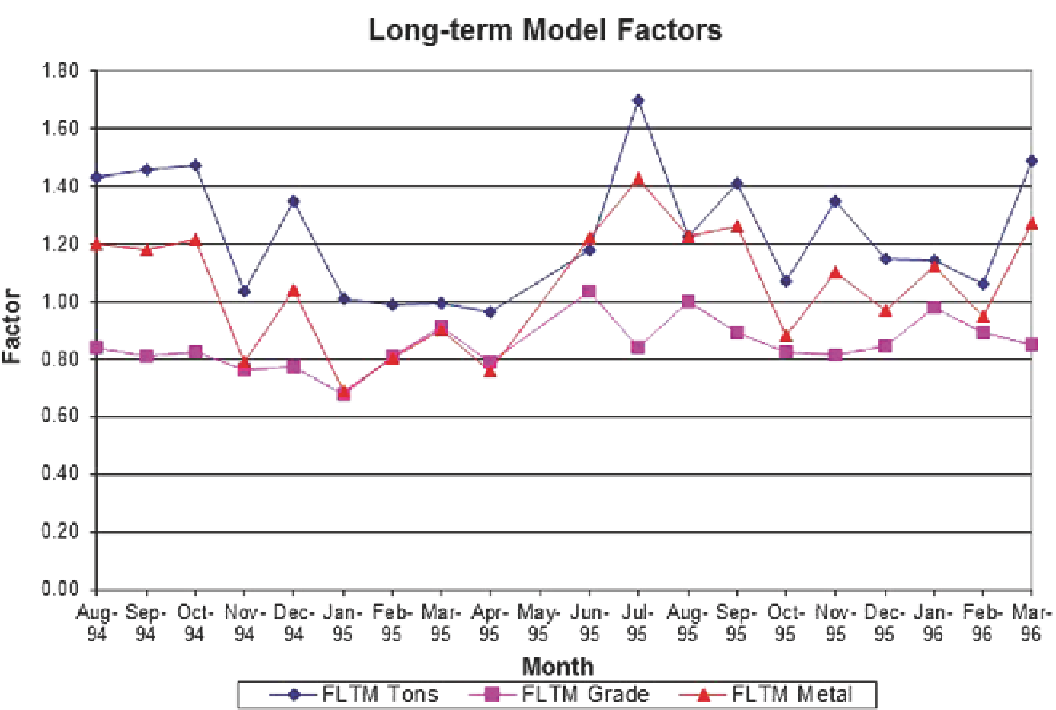Geoscience Reference
In-Depth Information
Fig. 11.12
Long-term resource model vs. received at mill reconciliation
F
LT M
measures how well the resource block model predicts
material delivered to the mill, which is the basis for the pre-
diction of future cash flows from the operation. Similarly,
an F
STM
can be defined to quantify the benefits achieved by
in-fill drilling, assuming an intermediate short-term model
is developed:
It is important to consider an appropriate time scale for
these comparisons. For example, it is not likely that com-
paring the resource model and the material delivered at
the mill on a weekly or bi-weekly basis is relevant. The
purpose of the resource (long-term) model is to support
long-term mine planning and scheduling, which is gener-
ally based on time-units of monthly, bi-annually, yearly, or
greater. Therefore it is not appropriate to compare them at
a smaller time unit, since the long-term model should not
generally be used for small-scale estimation. Similarly, and
depending whether stockpiles exist and how large they are,
the F
4
factor can be compared on a daily basis, since it mea-
sures the mine reported material versus the received at mill
material.
Figure
11.12
shows an example of the results of monthly
reconciliation for a heap-leach Au operation between the
Long-term resource model and the “received at mill” val-
ues. Note that monthly factors can vary significantly from
one month to the next, which may be mostly a function of
production tonnage (smaller mines tend to have larger rela-
tive deviations) and geologic complexity. If deemed reliable,
graphs like the one shown in Fig.
11.12
should be used to as-
sess the predictive capabilities of the models and to improve
future models.
Received-at-mill
Short-term
ST
F
=
=××
FFF
2
3
4
To compare the performance of the grade control model ver-
sus the material received at the mill, that is, to evaluate mine
operating performance and unplanned dilution and ore loss,
F
GCM
can be calculated as:
=
Received-at-mill
Grade-control
F
GCM
=
F
3
×
F
4
Finally, note that the F
4
factor measures directly the opera-
tional ore loss and dilution. This is, naturally, assuming that
the sampling points at the mill are deemed reliable for both
feed tonnage and grades.

